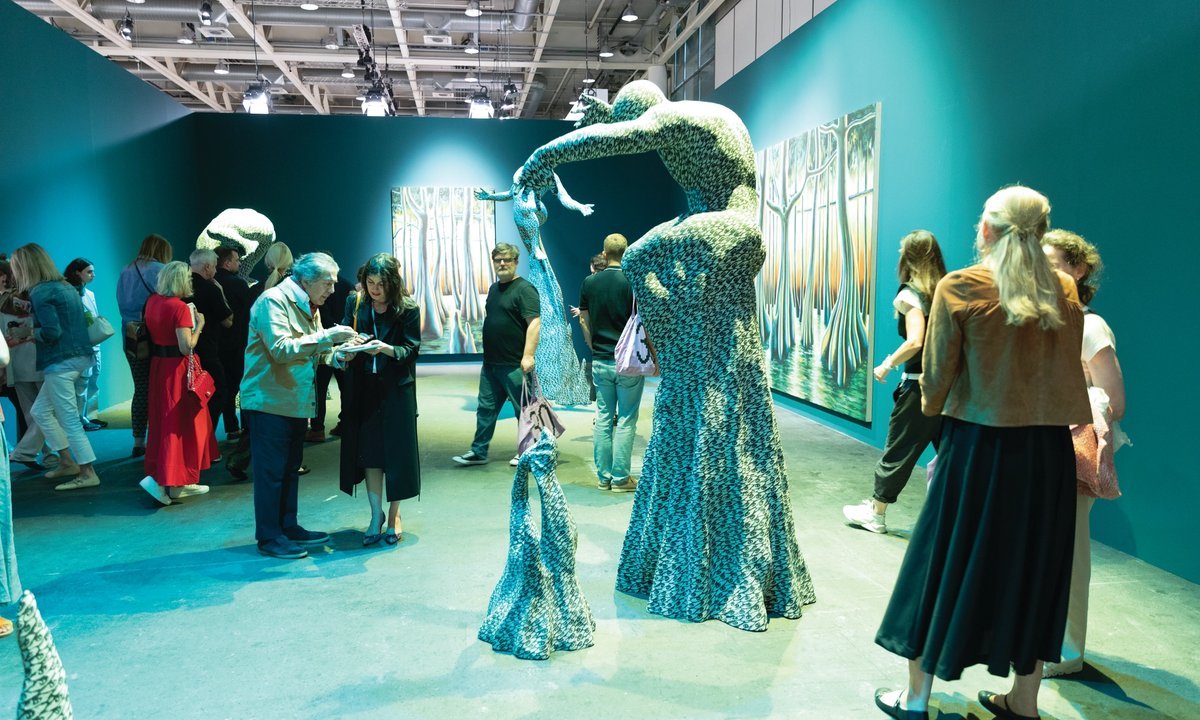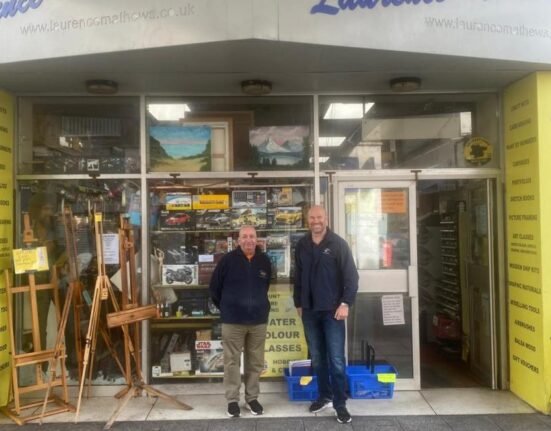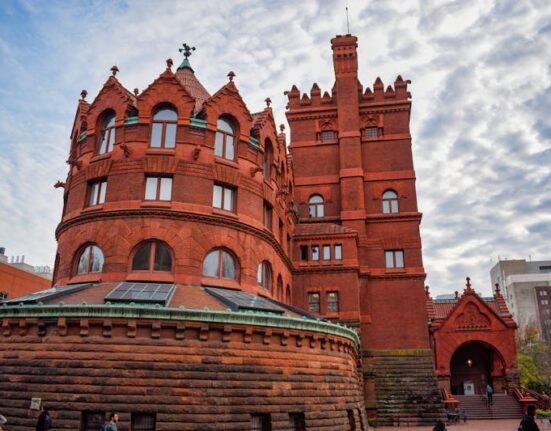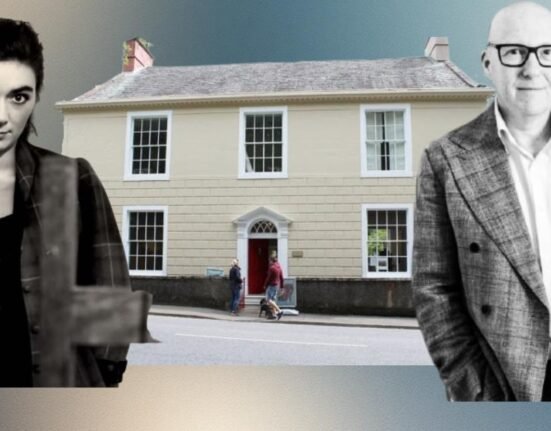Art Basel has long been considered the ultimate art fair. This year is no different—but even Art Basel is not impervious to market conditions and factors like rapidly developing trade wars, international conflict and threats of recession. During this year’s fair, galleries have reported strong sales, but there are signs of shifts in the landscape and question marks about how both the fair and dealers will adapt.
Prioritising strategy in a lean market
Dealers agree that Art Basel stands above all other fairs when it comes to quality. A sense of “Basel brilliance” comes up again and again, whether it is among seasoned dealers or those exhibiting at the fair for the first time, such as Jeremy Epstein, the director of the London gallery Edel Assanti.
“It’s a different register here,” he says. “There are many art fairs that achieve great commercial outcomes, but this one is generating discourse.” But galleries still have to be pragmatic. Epstein speaks about the importance of catching “high-energy moments” of the fair by investing in showing a work in Unlimited, the section for large-scale art, partly because it opens earlier in the week on Monday. “When approaching fairs like this, we do everything we can to create a scenario where we’re getting the messaging about our presentation out as early as possible,” he says.
Other dealers are extremely pragmatic in what they present on their stand. “We are pretty lean on what we bring, and specific,” says Wendy Olsoff, a co-founder of New York’s PPOW gallery, who adds that, to save money, she skipped installing a special floor for her stand and did not paint the walls. Because of those measures to save on costs, “I think we kind of knew going in we would do OK, and I think we’ve done better for it”, she says.
Are prices at the right level?
While there is a general consensus that the art world is a buyer’s market at the moment, some experts say prices still need to come down.
“Dealers don’t deal with economic reality,” says the US-based art adviser Todd Levin. Prices rose sky-high several years ago, but dealers “don’t feel that they can ever lower the price of their artists even if the market shifts,”
he adds.
Another art adviser, Adam Green, suggests there is evidence that some prices are still too high at Art Basel, particularly on the secondary market, where he saw numerous works go unsold. “Galleries often encouraged me to make an offer, but when the asking price is far above current market levels, it’s hard to even start a negotiation,” Green says. “Prospective buyers will simply walk away.”
Shifting client bases
Art Basel leadership noticed that there has been an increase in the number of young collectors. Some dealers say the fair could still do more to attract this group, who will soon be the industry’s biggest drivers.
“It’s still a bit ‘old world’,” says David Norr, a partner at James Cohan Gallery. “Which is not bad, but Basel is a harder trip to make if you’re, let’s say, a young parent whose kids are just ending school around that time or headed off to camp.”
For now, Art Basel’s reputation for quality and importance in the art market continues to draw in more seasoned collectors, but that may change in years to come. There are questions about whether galleries need to pivot to suit the taste of these new patrons, and their interest in collecting cross-category. Some are clearly following in their parents’ footsteps.
“We saw many of our clients with their son or daughter, who are like between 18 and 25 years old,” says the dealer Almine Rech. “Some younger ones are interested in historical art, and intergenerationality is really important right now. People love to put a 20th-century work with a 21st-century one and compare the quality, compare artists’ visions.”
The London-based art adviser Arianne Piper has also noticed galleries working to open up and appeal to a wider audience. “I think Basel is way more accessible than it used to be,” she says. “I would say most galleries have works even by the same artist at different price points, be it editioned works or sculpture or paintings.”
Others disagree that every fair needs to appeal to every kind of collector. “Basel is Basel. Miami is Miami. Hong Kong is Hong Kong. Paris is Paris,” Wendy Olsoff says. “Do you think each of these fairs in a global market is going to be the exact same group of people? Every fair is different, and I don’t want to be in the same mall in five different cities.”
Where are the Americans?
Much of the talk at gallery dinners and show openings this year has been about whether Americans would stay home this year. Rumours of major collectors skipping Basel were rampant, though dealers disagreed as to what extent the fair was missing its US contingent.
“The assumption is that many are opting for Art Basel Paris instead,” Green says.
But most dealers agreed that Art Basel Paris is not a direct competitor to the Swiss fair, at least not yet. The quality and scope of work available at Art Basel is still unmatched, and many said the small, quaint energy of the city is a strength for art lovers.
“There’s not a lot of distraction in Basel. You have great museums, great art, great fairs and good satellite fairs, and that’s a plus, whereas Miami, Paris and Hong Kong have an enormous amount of distractions,” Olsoff says.
Levin points to other factors to account for a potentially reduced American presence, like geopolitical instability and economic uncertainty. “The dollar is very weak right now compared to where it has been in the last few years,” he says.
For years, US dollars and Swiss francs have tended to have relative parity with one another—during this week at Art Basel, the exchange rate was closer to $1.21 for every SFr1. That difference can make or break some transactions, especially stepping from blue-chip work.
“Even a percentage point on a $75,000 purchase might actually make people stop and think for a moment,” Levin says. However, this “won’t be for someone buying at that mega-tier gallery level—they are just going to negotiate around that and knock off some percentage of the asking price in order to get where they need to get”.
Despite the soft market, Art Basel is still known as the toughest fair for a gallery to be accepted in to, and a status symbol to exhibit in.
“I started upstairs as a really small gallery 35 years ago,” Olsoff says. “If you told me I’d be sitting down on the ground floor of the Basel art fair, I would never have believed you. I still feel like I’m in a dream here.”







